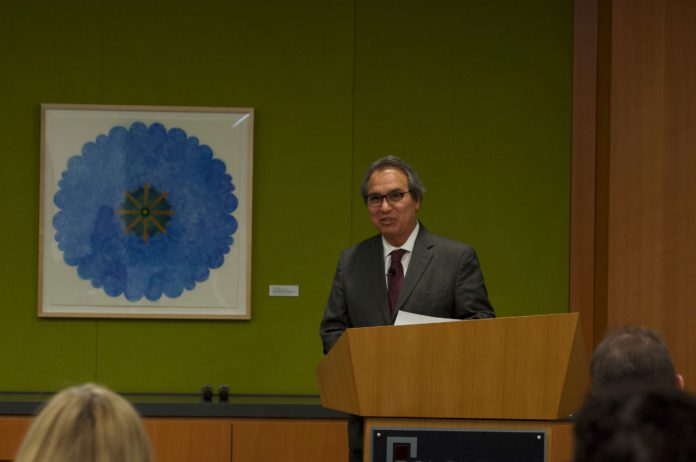

Since President Donald Trump took office, federal judges have issued dozens of nationwide injunctions to stop some of the administration’s most divisive policies from taking effect.
In the best-known example, judges blocked a series of travel bans against immigrants from certain Muslim-majority countries. Other immigration-related injunctions stymied Trump’s efforts to withhold funds from sanctuary cities and, more recently, blocked the administration’s “public charge” rule. The rule, which would have taken effect Oct. 15, aims to make it harder for immigrants to get visas if they are deemed likely to use public assistance programs.
The injunctions have rankled critics who claim the courts are overstepping their judicial authority and issuing the orders as a partisan weapon. At least 40 of the wide-reaching injunctions have been issued to halt Trump administration policies, while Obama only faced half that number during his two terms as president, U.S. Attorney General William Barr said in a September op-ed in the Wall Street Journal.
While the Trump administration has been slapped with a record number of the controversial court orders, there’s nothing inherently partisan about national or nationwide injunctions, as they’re often called, said University of Colorado Law Professor Suzette Malveaux during a talk titled “National Injunctions: Judges Gone Wild or Just Doing Their Jobs?” on Nov. 6.
“What’s good for the goose is good for the gander,” Malveaux said during the CU Law Talks lecture at Polsinelli in Denver. She said federal orders were also issued, albeit less frequently, to stop several Obama policies from taking effect, including a policy requiring public schools to let transgender students use bathrooms that fit their gender identity.
Malveaux outlined the legal and historical arguments for and against the use of national injunctions, a term she said is something of a misnomer since the orders don’t necessarily affect the federal government or apply within a set geographical area. “It’s not really ‘where?’ but more like ‘who?’ Who does that injunction apply to?” she said.
During both the Obama and Trump administrations, federal judges issued injunctions that applied to parties and non-parties in a case alike, leading many to question their legitimacy and the breadth of their application. However, Malveaux said that while federal judges are constitutionally limited when it comes to jurisdiction, they are not as limited when it comes to the scope of a remedy, which can go beyond just the parties in a case.
Critics of national injunctions, such as Prof. Samuel Bray of Notre Dame Law School, have argued that nationwide injunctions did not appear until the 1960s, while other scholars claim the orders are much older, according to Malveaux, citing a September Harvard Law Review article by Mila Sohoni, a professor at the University of San Diego Law School, that traced the practice back more than a century.
Moving beyond the controversy about whether judges can issue national injunctions under the Constitution, Malveaux then tackled the question of whether they should.
The most important purpose of the injunctions is to prevent widespread, irreparable harm, she said, adding the orders against Trump’s travel ban —without which tens of thousands more people could have immediately lost their visas or been deported — were a good example of this function.

“Sometimes we don’t have time to percolate. When you’re in that moment of crisis, courts have to solve real problems in real time,” Malveaux said.
Adding to the list of pros, she said national injunctions help promote the idea of fairness by showing that people who are similarly situated are treated the same under the law, even if they don’t have the resources to bring their own lawsuits. They also promote efficiency and save money by avoiding hundreds or thousands of duplicative lawsuits.
While some, including Bray, have countered that national injunctions undermine the role of class actions in seeking relief for multiple plaintiffs, Malveaux said Congress and the Supreme Court have made it hard to get a class certified.
“You can’t have it both ways,” she said. “You can’t ban national injunctions while also making class certification difficult.”
Malveaux did acknowledge some drawbacks to the injunctions, including concerns that they promote forum shopping in which litigants pick a jurisdiction, or even a specific judge, likely to give them a favorable ruling. To stop a Trump policy, for example, a court in the Ninth or Second Circuit is a safe bet.
“This sort of undermines the idea of the unbiased court system,” she said.
“And it’s particularly troubling if you think about there’s one single judge — this district court judge — that has the power to, in fact, determine policy for the country nationwide.”
Other potential cons include the risk of creating conflicting injunctions and the fact that they, in their immediacy, don’t allow for the law to develop, Malveaux said, noting that the U.S. Supreme Court has a preference for percolation.
The final portion of the talk addressed possible solutions. These ranged from eliminating national injunctions altogether, which is the goal of the Nationwide Injunction Abuse Prevention Act introduced in September, to setting up a specialty court in D.C. to manage the cases.
The professor of civil rights law said the increase in national injunctions could be a response to increased executive overreach and disregard for constitutional norms and institutions as well as growing vitriol toward immigrants, minorities and women.
“So the question[s] for me [are] really: How much of that do we allow? Where do you draw the line?” she said, and whether “the increase in the number of national injunctions is a symptom of a larger problem, and not the problem itself.”
— Jessica Folker, [email protected]

